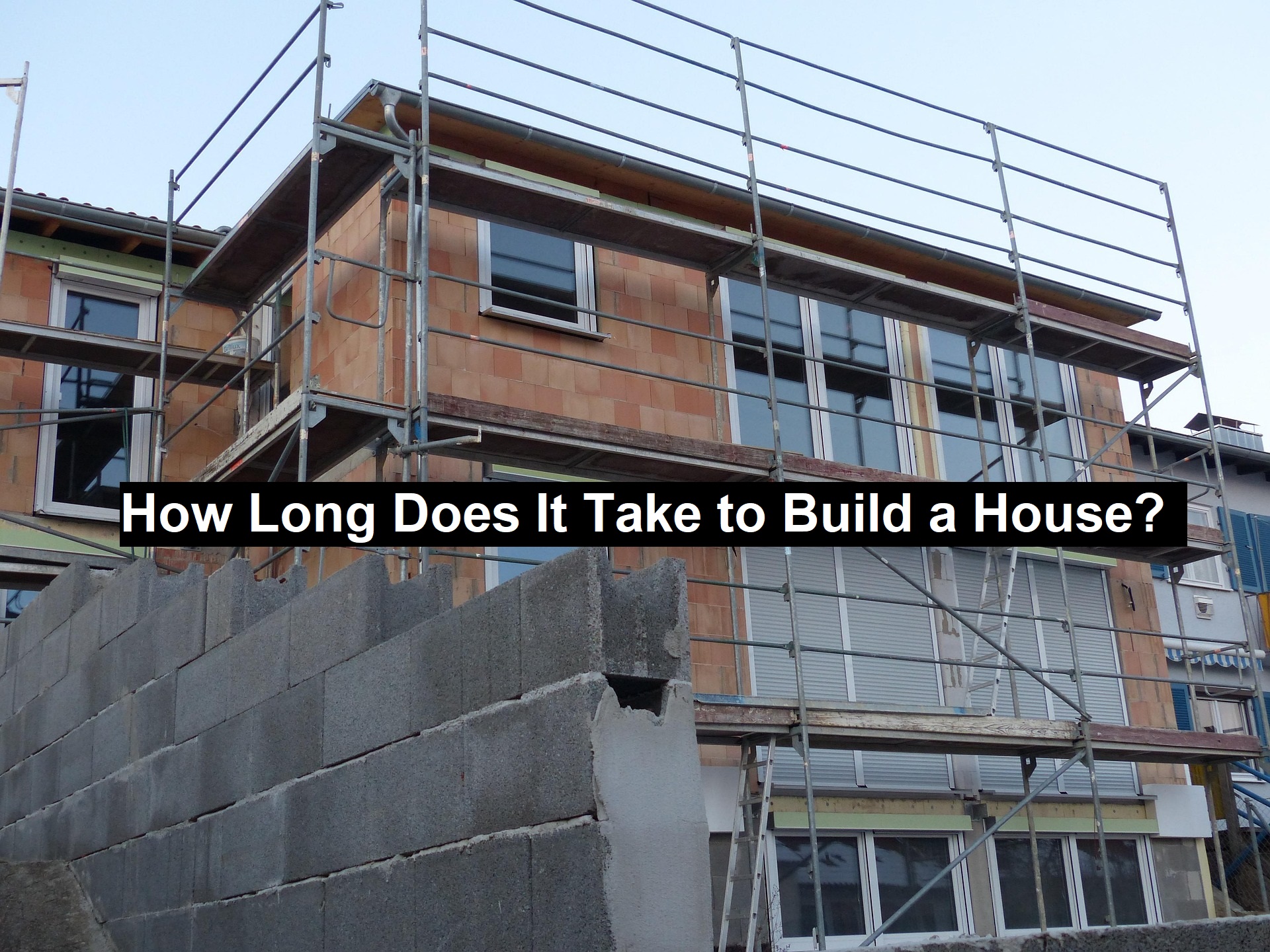How Long Does It Take to Build a House?

Building a house is one of the most rewarding but complex projects you’ll ever undertake. As someone who has walked dozens of families through this process, I can promise you that while the result is incredibly gratifying, the process requires patience, planning, and realistic expectations.
Let me walk you through what to expect in each stage, why timelines vary, and how you can help keep your project on track.
Learning the Home Building Timeline
Every home build has three stages of work, but the duration of each can be rather varied:
1. Pre-Construction (1-4 Months): The Foundation of Your Project
There is some significant prep work that needs to be done before any construction begins:
Finding and Preparing Your Lot
I’ve seen clients spend from two weeks to six months just searching for the perfect strip of land. After you have your property secured, you’ll need:
- A professional survey
- Soil testing (very crucial in foundation design)
- Clearing and grading
Designing Your Home
This is when dreams start taking shape. An average home design can be done in 4-6 weeks, but bespoke plans typically take 2-3 months.
Tip: The more detailed your initial plans, the fewer delays you’ll encounter later.
Getting Permits
In my experience, this is where most of the initial delays happen. Some municipalities get permits out in weeks; others in months. I recently had a project in St. Louis County with a client where permit approval was 11 weeks—something we hadn’t planned for.
Read: Thinking of Buying A Home Abroad? Here’s What You Need To Know
2. Active Construction (6-12 Months): Where the Magic Happens
Now the good stuff begins! Here’s a typical breakdown:
Foundation (2-4 weeks)
The crew will:
- Excavate the site
- Install footings
- Pour concrete
Weather is a factor here—we used to lose two weeks waiting for the ground to thaw in January.
Framing (4-8 weeks)
This is when your house skeleton is completed. One client described it as
“watching my childhood dollhouse come to life.”
Mechanical Rough-Ins (3-6 weeks)
Plumbers, electricians, and HVAC installers all work simultaneously. Coordination is key—we use detailed scheduling so as not to have trades tripping over each other.
Insulation & Drywall (2-4 weeks)
All of a sudden, it starts to feel like an interior space! This phase goes quickly unless there are material delays (like the drywall shortage we had in 2021).
Interior Finishes (4-8 weeks)
This is where personality comes out:
- Flooring choices
- Cabinet installation
- Paint color
- Lighting fixtures
Exterior Work (2-4 weeks)
Siding, roofing, and landscaping wrap it up.
3. Final Touches (1-2 Months): Crossing the Finish Line
Even after construction “is done,” there’s more:
The Punch List
There are minor things to repair in every house—a squeak on wood floors, a door that is off just so. We tend to reserve 2-3 weeks for this.
Final Inspections
These could take weeks or days, depending on the schedule of the inspectors.
Certificate of Occupancy
Your pass to move in!
What Affects Your Timeline?
From many years of building homes, I have discovered most of the important factors affecting the schedule:
Custom vs. Production Building
- Production homes (such as those in planned communities) tend to complete in 6-8 months.
- Custom homes usually take 10-16 months.
- Ultra-custom luxury estates may take 18-24 months.
Weather Woes
We lost 14 working days to rain last spring during a key framing phase. Seasonal planning is important—we attempt to pour foundations before freezing and finish roofing before rainy seasons.
The Human Factor
- Shortages of skilled labour can slow projects down.
- Subcontractor scheduling conflicts are the norm.
- Homeowner delays in decision-making (I once waited 3 weeks for cabinet hardware decisions)
Availability of Materials
We learned the hard way about supply chain disruptions during the pandemic. Now we:
- Pre-order Windows 12 weeks in advance
- Lock in appliances before drywall.
- Have multiple suppliers on our books
The Paperwork Puzzle
One client’s deck design took 5 separate approvals. We now include extra time on every schedule for permit review.
Real Stories From the Field
The Quick Build:
A young couple chose an existing production builder’s floor plan. From permit to move-in: 7 months. Their secret? Limited customisation and starting early in the spring.
The Custom Journey:
A retired couple on their way to their dream home faced:
- 3 months for custom architectural plans
- 2 permit revisions
- A 6-week window delay
How to Keep Your Project on Track
Start Early
Begin planning at least 6 months before your desired start date.
Choose Your Team Wisely
Find builders who possess:
- Strong networks of subcontractors
- Local permit expertise
- Precise scheduling practices
- Act Quickly
- Create a selection timeline with your builder and stick to it.
Leave Buffer Time
Our recommendation is to provide 10-15% extra time on any projected finish date.
Communicate Frequently
Biweekly check-in meetings prevent minuscule problems from turning into gargantuan setbacks.
When Delays Do Happen (And They Will)
Even with the best planning, there are surprises:
Weather Extensions
Keep a seasonal work backup plan handy.
Material Shortages
Be prepared to stock up on alternate materials without compromising at quality.
Inspection Backlogs
A few contractors (ourselves included) use independent inspectors to work around city delays.
The Emotional Ride
Clients have described the ride as:
Months 1-3: Anticipation
Months: 4-6: Anger at delay
Month 7+: Renewed excitement as finishes become a reality
One customer described,
“Walking through the house framed out felt unreal—like looking at the skeletons of our future memories.”
Is It Worth the Wait?
Yes. There’s nothing quite like:
- Watching your dream become a reality.
- Designing every single detail
- Knowing the house was built especially for your family
As one owner told me,
“The day we picked up our keys, all the anxiety dissipated. This wasn’t a house—it was our home.”
Final Thoughts
While the standard build only requires 9-12 months, your schedule will be your own. The key is getting an experienced team, being flexible, and keeping your eye on the fantastic final product.
Building a home is a major life event. While timelines can vary, understanding the process—and preparing for potential delays—helps make the experience more enjoyable. From securing land to adding finishing touches, you’re looking at an average of 9 to 15 months, depending on the specifics of your project.
If you are beginning here in Missouri, keep in mind that each neighbourhood and city is unique with varied rules, weather conditions, and supply of skilled labour. Many homeowners utilise construction companies in St Louis, MO to deal with local laws and coordinate the building process.
You can turn your dream of building a home into a success story by staying informed, organised, and flexible. No matter if it is a starter home or a dream home, the road could be long, but the end goal is worthwhile. You may want to consider consulting with seasoned construction companies in St Louis, who know the process from top to bottom, and can make the process easier for you.
For St. Louis residents, employing local builders who understand our distinctive climate, soils, and permitting processes can shave months of misery.
Remember—good things take time. Your new house will be worth every moment of the process.
Ready to get started on your building project? Let’s talk about realising your dream home on budget and schedule.
Author’s Bio:
Nicole Kidman has years of experience in the construction industry and works with one of the top construction companies in St Louis. She focuses on improving building processes, making projects more efficient, and supporting sustainable construction practices.



